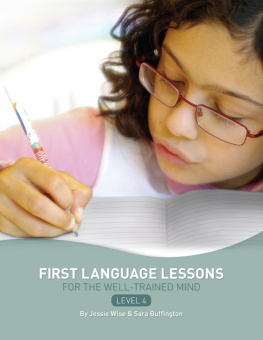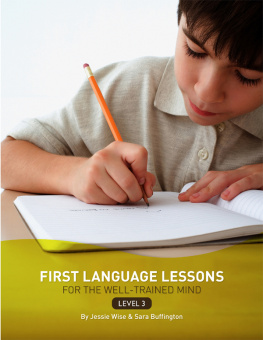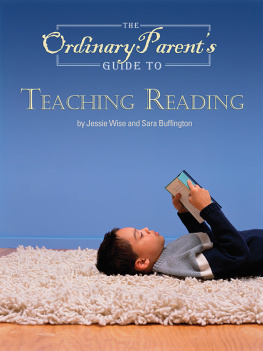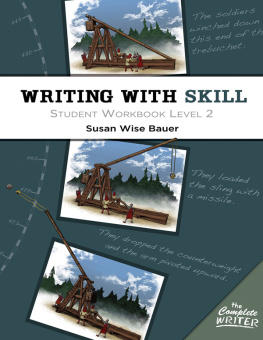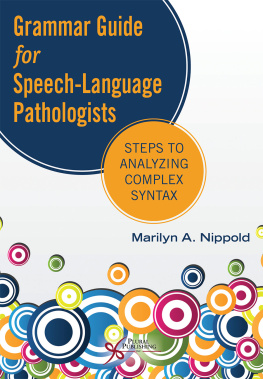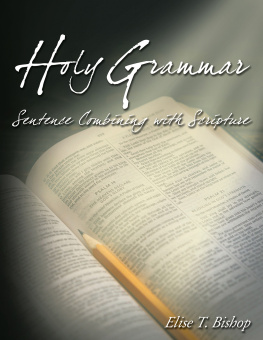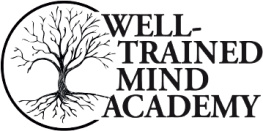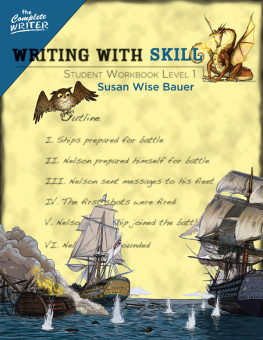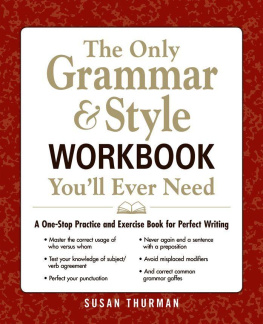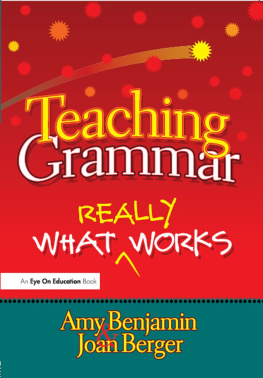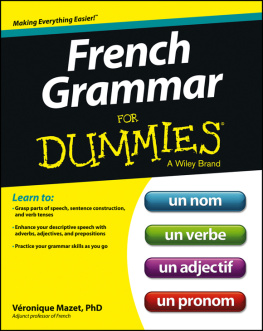
This book is to be used in conjunction with the
First Language Lessons for the Well-Trained Mind, Level 4
Student Workbook
ISBN 978-1-933339-33-7.
Available at www.peacehillpress.com
or wherever books are sold.
2008 Peace Hill Press
www.peacehillpress.com
Publishers Cataloging-In-Publication Data
(Prepared by The Donohue Group, Inc.)
Wise, Jessie.
First language lessons for the well-trained mind. Level 4 / by Jessie Wise and Sara Buffington.
p. : ill. ; cm.
Includes index.
ISBN: 978-1-933339-34-4
ISBN: 978-1-942968-35-1 (e-book)
1. English language--Grammar--Study and teaching (Primary) 2. English language--Composition and exercises--Study and teaching (Primary) 3. Language arts (Primary) I. Buffington, Sara. II. Title.
LB1528 .W573 2007
372.61 | 2007924667 |
 | FIRST LANGUAGE LESSONS FOR THE WELL-TRAINED MIND |  |
LEVEL 4
by Jessie Wise and Sara Buffington

This e-book contains some places that ask the reader to fill in questions or comments. Please keep pen and paper handy as you read this e-book so that you can complete the exercises within.
Also by Jessie Wise and Sara Buffington
The Ordinary Parents Guide to Teaching Reading
(Peace Hill Press, 2005)
First Language Lessons for the Well-Trained Mind, Level 3
(Peace Hill Press, 2007)
Also by Jessie Wise
First Language Lessons for the Well-Trained Mind, Levels 1 and 2
(Peace Hill Press, 2003)
with Susan Wise Bauer
The Well-Trained Mind: A Guide to Classical Education at Home
(W.W. Norton, Third Edition, 2009)
The Four-Strand Approach
This series uses four different strands to teach grammar and punctuation rules, proper usage, and writing skills.
Strand 1: Memory Work
Memorizing Poetry
Memorizing poetry stores beautiful language in the students mind. Poetry is the easiest kind of material to memorize because of its rhythm and rhyme. When a student memorizes a poem, it gives him confidence that he can memorize anythingmaterial from history, science, and other subjects. Memorizing is an active exercise; it trains the students attention span. There is a good memorization technique in the first poetry lesson of this book.
Memorizing Rules and Definitions
The technique for memorizing rules and definitions is practiced in the scripted lessons. A summary of the rules, definitions, and lists to be memorized is on .
A note for students who have not used previous levels of First Language Lessons: Most of the definitions and memorized lists of parts of speech were introduced in earlier levels of this series. All of that material is reviewed in this book. However, you may wish to do extra review of these rules and lists. You may find it helpful to purchase the audio companion to Levels 1 and 2 (a CD containing both chanted and sung versions of definitions and lists to be memorized) from Peace Hill Press at www.peacehillpress.com.
Strand 2: Copywork and Dictation
Copywork engages both the visual and motor memory of the student. It gives the student models of properly constructed sentences.
Dictation teaches the student to picture a sentence in his mind before putting it down on paper and also trains him to hold complete sentences in his memory as he writes. Dictation prepares the student for original writing, since it allows the young writer to practice mechanics without also struggling to produce original content.
This book uses dictation within the lessons, but most lessons also end with an optional dictation exercise if the student needs extra practice. If you are already using a writing program which includes dictation, you should probably not use the optional dictation unless the student needs drill in a particular skill.
Follow this procedure when giving dictation:
1. After you read a sentence, ask the student to visualize the beginning capital letter and the end punctuation mark.
2. Repeat the sentence once more.
3. Have the student repeat what you just said.
4. Have him write what he has just said, if it is accurate. If it is not accurate, repeat steps 2 and 3.
When giving dictation, provide the student with all necessary spelling help. If the student begins to write a word or punctuation mark incorrectly, gently stop him and give him the correct spelling or format. You should never allow a student to write dictation incorrectly.
Strand 3: Summary Exercises (Narration)
A student summarizes when he tells you in his own words about a passage that he has read. Summary exercises help the student to listen with attention, to grasp the main point of a work, to think through a sequence of events, and to reproduce the events in his own words in proper, logical order.
Strand 4: Grammar
A student studies grammar to learn how language works. This book teaches traditional grammar. Traditional grammar is not only acceptable; it is expected in the educated world.
This book practices sentence diagramming. A diagram is essentially a picture of a sentence; it shows visually how all of the sentence parts operate. As the student becomes more proficient in diagramming, he can use it as a tool to correct poorly constructed sentences in his own writing.
Oral usage exercises are included at the end of some lessons. These are optional. You dont have to confine these exercises to the student using the book. Practice them as a family at any time of the day you wish! For more exercises in oral usage, a good resource is Oral Language Exercises by William A. Kappele (A Beka Book Publications, 1982).
Using the Lessons
The lessons are scripted for your convenience, but neither you nor the student has to stick to the exact wording provided.
Instructor: | Suggested wording for the instructor is in traditional print. |
Student: | Suggested answers for the student are in italics. |
Workbook: | Selected text from the Student Workbook is in a sans-serif typeface. |
Answer Key: | Answers to workbook exercises are also in a sans-serif typeface. |
Notes to the instructor are in smaller, traditional print, between two lines.
Length of Lessons
This book is designed to be completed in one school year. If you do the lessons in the main part of the book but skip the end units, do two or three lessons each week for the school year (36 weeks). If you decide to include the end units as well, plan on three lessons per week. See the sample schedules on page 552.
The lessons that follow are of varying length; some contain more drill than others, depending on the difficulty of the topic. If a student does not need all of the repetition in any given lesson, you should feel free to skip it and move on.
Many of the lessons should be divided into two or even three days worth of work. A student doing fourth-grade-level work will probably need to spend about thirty minutes on a lesson. If the lesson time exceeds thirty minutes, stop and pick up with the remainder of the lesson the following day.
Next page
